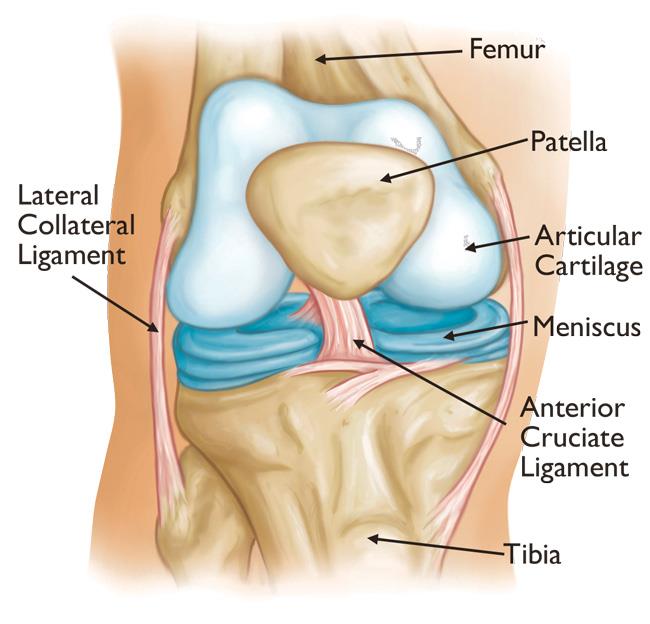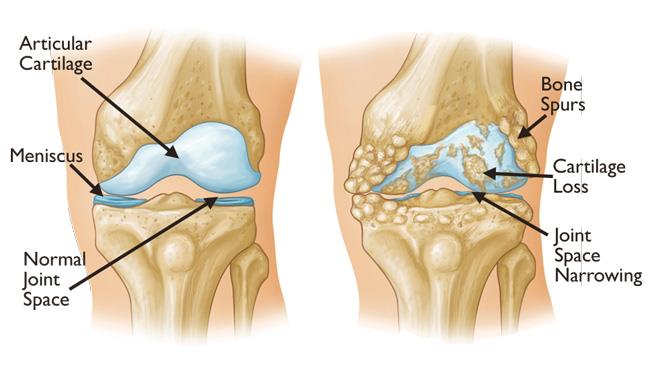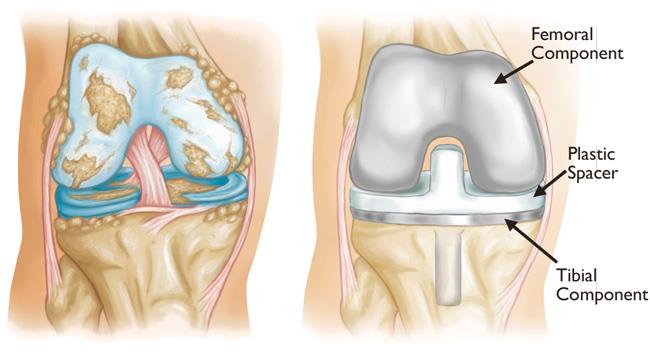Knee Replacement
Knee replacement, also referred to as knee arthroplasty is a surgical procedure designed to restore a knee affected by arthritis. In this operation, metal and plastic components are used to cover the ends of the bones that make up the knee joint, including the kneecap. This surgery is often suggested for people with advanced arthritis or a serious knee injury.

How Robotic Knee Replacement Surgery is performed in Turkey?
In knee replacement surgery, the surgeon substitutes damaged or deteriorated components of the knee joint with an artificial joint known as an implant or prosthesis. Most patients who undergo this procedure to alleviate their painful and debilitating arthritic condition experience very positive results.
Knee replacement surgery techniques have advanced significantly over time. Currently, an increasing number of procedures are being carried out with the aid of robotic technology. Surgeons who incorporate these robots into their practice frequently find that the technology allows for a more personalized approach, aligning surgical goals with the individual anatomy and functional needs of each patient.
The surgeon is required to meticulously remove enough cartilage and bone to properly position the prosthesis, while also being careful not to take away too much bone, as this could jeopardize structural stability or lead to abnormal tension in the knee ligaments. One of the advanced technologies available today is surgical robotics, which aids surgeons in removing the correct quantity of bone at the ideal angle.
These robotic systems use optical tracking technologies that allow for real-time monitoring of the knee's position during surgery. This enables the surgeon to evaluate the knee ligaments throughout the procedure and effectively plan the precise amount of bone and cartilage that should be eliminated. Consequently, the robotic system can be accurately adjusted to achieve the intended surgical outcome.
Surgeons focus on achieving millimeter-level precision when performing knee replacements, and the use of robotic assistance allows for even greater accuracy at the sub-millimeter level, helping them accurately reach specific targets throughout the procedure.
Before any cuts are made to the bone, the dimensions of the knee are recorded in the robotic system, allowing its virtual planning software to accurately represent the actual surgical environment. This precise tracking during the procedure helps assess the ligaments around the knee and allows the robot to be set in specific positions, aiding the surgeon in various aspects of the operation. By using data on the tension in the knee ligaments, many robotic systems are equipped with software that enables virtual planning for the implant's positioning to optimize ligament function throughout the range of motion. Furthermore, these measurements aid in selecting the proper size of the implant to ensure a fitting match with the patient's anatomy.
After the ideal implant placement has been identified, the robotic system facilitates the surgeon in executing the surgical plan with exceptional precision. Depending on the specific robotic platform being used, a variety of specialized instruments may be utilized for the safe excision of damaged cartilage and bone, which could include oscillating saws, high-speed burrs, or robotic cutting guides. Once the precision resection guided by robotics has been completed, trial implants are positioned in the knee to ensure that the replacement is functioning correctly. Once this functionality is confirmed, the surgeon proceeds to install the permanent implants, finalizing the knee replacement procedure.
What are the types of Knee Replacement in Turkey?
Who are suitable for Knee Replacement in Turkey?
1. When Nonsurgical Options Fail to Alleviate Pain
Chronic knee pain is often caused by arthritis, resulting from the deterioration of the cartilage in the knee joint.
If you have been experiencing knee pain or stiffness for an extended period, it’s likely you have already explored various conservative treatments such as medications, physical therapy, steroid injections, or hyaluronic acid injections (viscosupplementation).
Should these treatments cease to be effective, your physician may suggest considering total knee replacement surgery.
2. Impact of Knee Pain on Daily Activities
Chronic knee pain can severely hinder your ability to perform everyday tasks.
Activities as simple as walking short distances or transitioning between sitting and standing may become difficult, necessitating the use of a cane or walker.
If knee pain consistently affects your daily life or disrupts your sleep, it may be time to discuss total knee replacement options with your doctor.
3. Persistent Knee Inflammation or Swelling
Regular swelling in the knee can indicate an inadequate response to treatments like anti-inflammatory medications.
If you find that rest, ice, and medication fail to manage the inflammation, it could signal the need for a knee replacement.
4. History of Injury or Joint Deformity
A significant knee injury, such as a severe fracture, may necessitate joint replacement if it leads to damage of the knee joint cartilage, contributing to post-traumatic arthritis.
Serious fractures can also impede blood flow to the bones, risking avascular necrosis.
Additionally, individuals born with joint deformities that cause misalignment may require knee replacement surgery, as these issues can lead to arthritis and pain in neighboring joints.
5. Overall Health and Surgery Readiness
Good overall health is essential prior to undergoing surgery.
Your doctor will conduct a physical examination and may order blood tests, urine tests, and an electrocardiogram (EKG) to assess your fitness for the procedure.
Those with chronic conditions like heart disease might need clearance from a cardiologist before surgery can proceed.
6. Commitment to Post-Surgery Rehabilitation
Engaging in physical therapy is crucial for recovery following knee replacement surgery.
Expect to participate in physical therapy sessions two to three times a week for several months to aid in your rehabilitation.

Is it safe to have Knee Replacement in Turkey?
Knee replacement surgery is a widely performed and generally safe procedure. Nonetheless, like any surgical intervention, it carries certain risks, which your doctor will discuss with you prior to the operation.
The majority of individuals who undergo knee replacement experience no complications. In cases where complications do arise, they are typically minor and manageable. The likelihood of encountering complications can vary based on factors such as your age and overall health.
What are the risks or side effects of Knee Replacement in Turkey?
Knee replacement surgery is a common and generally safe procedure, but, like any operation, it comes with risks that your doctor will explain to you. Most patients do not experience complications, and when they do occur, they are typically minor and treatable. The likelihood of complications can vary based on your age and overall health.
One potential complication is the development of blood clots or deep vein thrombosis (DVT). This risk arises due to changes in blood flow and clotting after surgery, but in many cases, it is not severe. If a clot leads to pain or swelling, your doctor may prescribe anticoagulant medications to assist in treatment. There is also a risk that a clot forming in the leg could move to the lungs, resulting in a condition known as pulmonary embolism, which can lead to serious complications. To minimize the risk of blood clots, your doctor may recommend wearing compression stockings or using anticoagulant medications.
Another possible complication is a wound infection, which carries a small risk following the operation. Typically, such infections can be treated effectively with antibiotics; however, if the infection penetrates deeply into the knee joint, further surgery may be required.
There is also a risk of damage to nearby nerves, blood vessels, or ligaments during surgery. While this is uncommon, any damage that occurs can often be repaired during the procedure or may heal over time.
After knee replacement, most patients report an improvement in their daily lives, though some may continue to experience issues with their new knee. These issues can include difficulty bending the knee, persistent pain and stiffness, or instability while standing or walking. Engaging in physiotherapy and specific exercises may help address these ongoing problems.

How long does it take to recover from Knee Replacement in Turkey?
After your surgery, you will be taken to the recovery room before being moved to a hospital room. The duration of your hospital stay typically lasts a few days, during which time you will be closely monitored and rehabilitation will commence.
Physiotherapists will begin working with you within hours following your knee replacement. Initiating early mobilization is essential as it helps reduce the risk of deep vein thrombosis and infections, while also enhancing your comfort. With their support, many patients are often able to go home within two to three days post-operation. Your physiotherapist will provide you with home exercises and guidance on how to utilize mobility aids like crutches and walking sticks. If your procedure is a day surgery knee replacement, you can expect to be discharged on the same day.
Following the surgery, it is common to experience some pain and discomfort in your knee. The medical team will provide pain relief medication to help keep you comfortable, and it's important to take this medication as prescribed and inform the healthcare staff if you have any concerns.
In the days following your surgery, you will be encouraged to increase your activity levels, which will involve walking and practicing daily tasks. At this point, you should be able to stand without assistance, begin walking independently or with minimal support, and manage dressing and bathing yourself. You may also have the opportunity for longer, assisted walks.
Once you return home, it’s crucial to rest, especially during the first six weeks when you may feel more fatigued. However, you will need to find a balance between resting and adhering to your rehabilitation program. Gradually, you'll start walking with support from a walker or crutches, and physiotherapy sessions will focus on restoring knee mobility and strength.
As the weeks progress, you should notice a decrease in pain and an improvement in your range of motion. By the second or third week after the surgery, many individuals are able to get around with just a walking stick or even without any assistive devices. It's normal to experience some swelling and discomfort during this period, but these symptoms should gradually improve.
What is the ideal age for Knee Replacement in Turkey?
In addition to the standard surgical risks, younger patients in their 40s and 50s face a significant consideration regarding knee replacement surgery: the potential for premature wear of the artificial prosthetic. This concern often plays a key role in determining the appropriateness of knee replacement for younger individuals. While modern knee replacement implants are designed to last, they typically function well for up to 20 years in about 90% of patients.
However, more active individuals may experience greater wear and tear on their implants, which can lead to earlier deterioration of the prosthesis. This factor is particularly important for patients who engage in high-impact sports or physically demanding activities, as their lifestyle can affect the longevity of the knee replacement.
It's important to note that age alone is not the primary factor in deciding whether someone is a candidate for knee replacement surgery. A patient's overall health, the expected benefits of the procedure, and the anticipated lifespan of the prosthesis are more critical in determining eligibility.
Research indicates that individuals under the age of 55 will be a rapidly growing demographic seeking total knee replacement surgery by 2030. Studies also reveal that the outcomes for knee replacement surgeries in younger patients are consistently favorable. More than 85% of patients under 50 report satisfaction with their results, and an impressive 98% of these patients have knees that continue to function well ten years post-surgery. This data underscores the effectiveness of the procedure and its potential to significantly enhance quality of life for younger individuals suffering from knee issues.
How much does it cost to have Knee Replacement in Turkey?
Knee replacement surgery is a widely sought-after procedure in Turkey, attributed to the country's high-quality medical services and affordability. The cost of knee replacement in Turkey can vary based on several factors, including the surgeon's experience, the clinic's reputation, the complexity of the procedure, and the services provided. On average, prices typically range from €9.000 to €15,000.
| Country | Average Cost (USD) | Remarks |
|---|---|---|
 Turkey Turkey |
$9,500 - $16,000 | Affordable with comprehensive packages |
 USA USA |
$20,000 - $75,000 | Higher cost, advanced facilities |
 UK UK |
$19,000 - $25,000 | High quality, more expensive |
Why choose Elan to have Knee Replacement in Turkey?
At Elan, we understand the importance of providing exceptional care and support to our clients throughout their medical travel journey. When you choose Elan for Facelift, you can expect,
Access to renowned and experienced surgeons who specialize in Facial Plastic Surgeries.
State-of-the-art medical facilities equipped with advanced technology.
Personalized assistance with travel arrangements, accommodation, and post-operative care.
Affordable and transparent pricing options.
A dedicated team committed to ensuring your comfort, safety, and satisfaction.
Quick facts of Hip Replacement Surgery in Turkey
- Procedure: Replacing damaged hip components with an artificial joint.
- Duration: 1 to 2 hours
- Stay: 3-4 night Hospital 6-7 nights Hotel Accomodation.
- Anesthesia: General Anesthesia
- Recovery: After 2-4 weeks can go back to work
- Clothes to Wear: Comfortable clothes (sweatshirts, button-down or zipped shirt etc.)
- Side Effects: Clicking or popping, Loosening, Nerve damage, Swelling and stiffness
- Exercise: After 3-4 months
- Scars: Small vertical scar
- Pain: Mild
- Results: Swelling will go ease after 7 to 15 days and final result reveal between 6 months to 1 year
